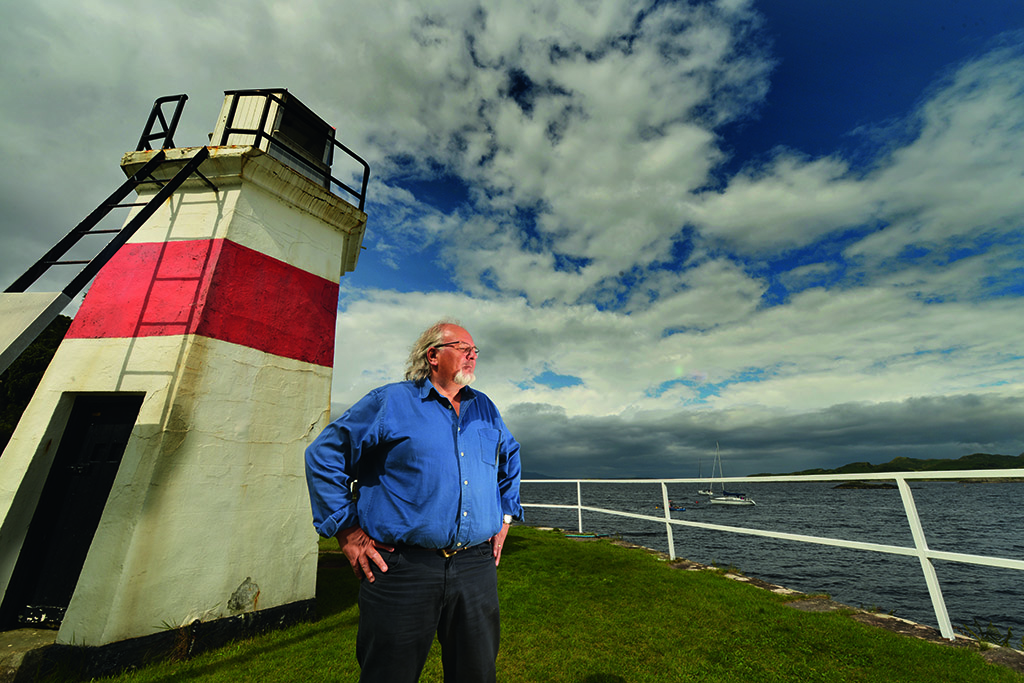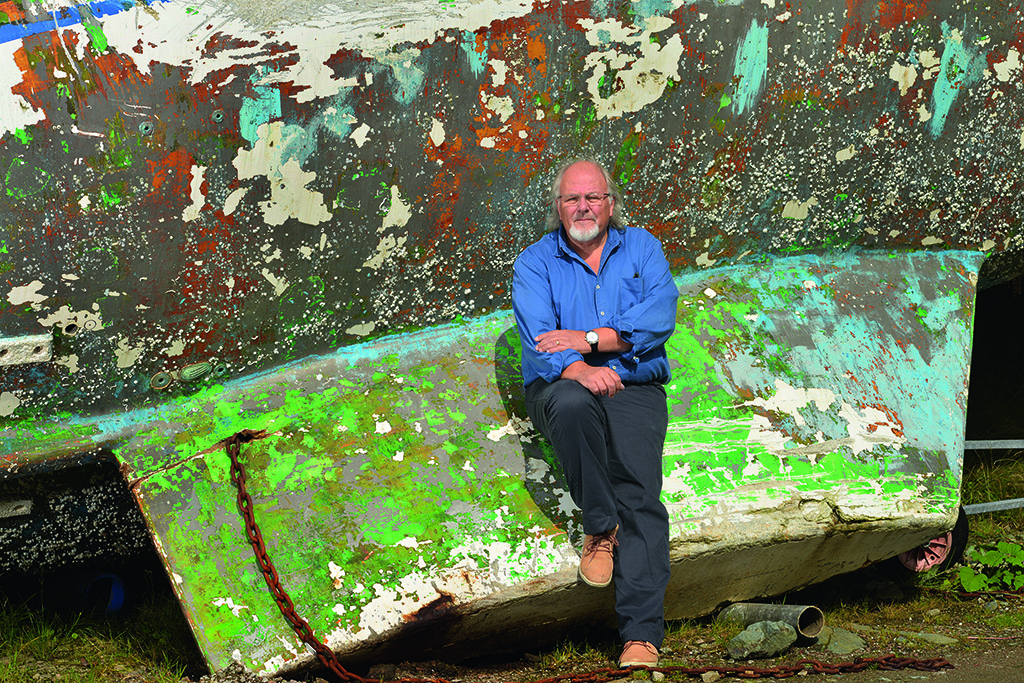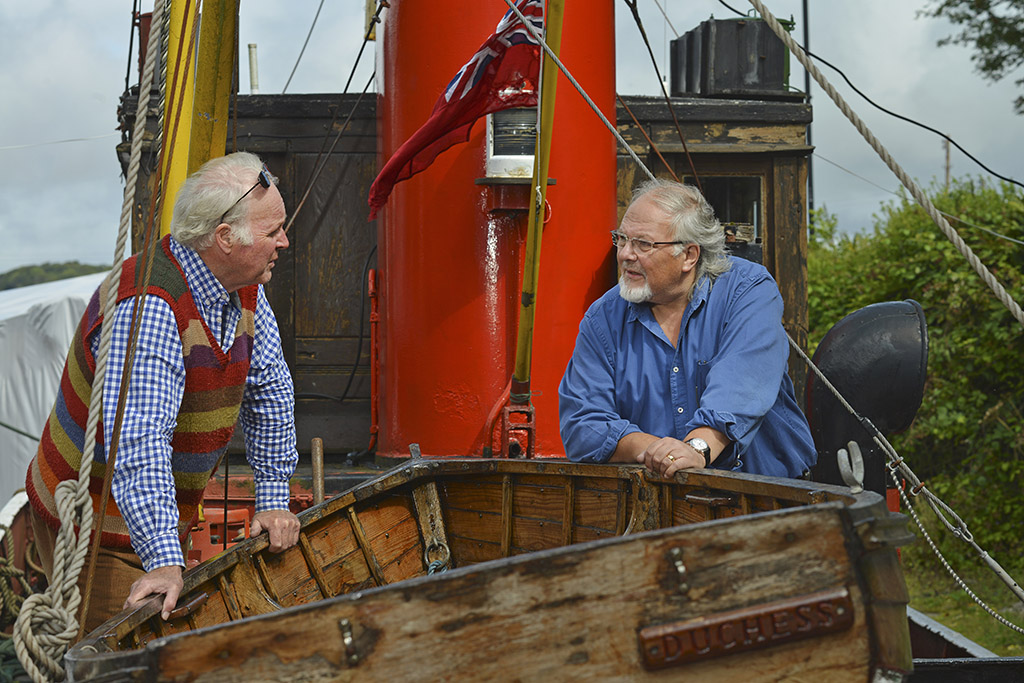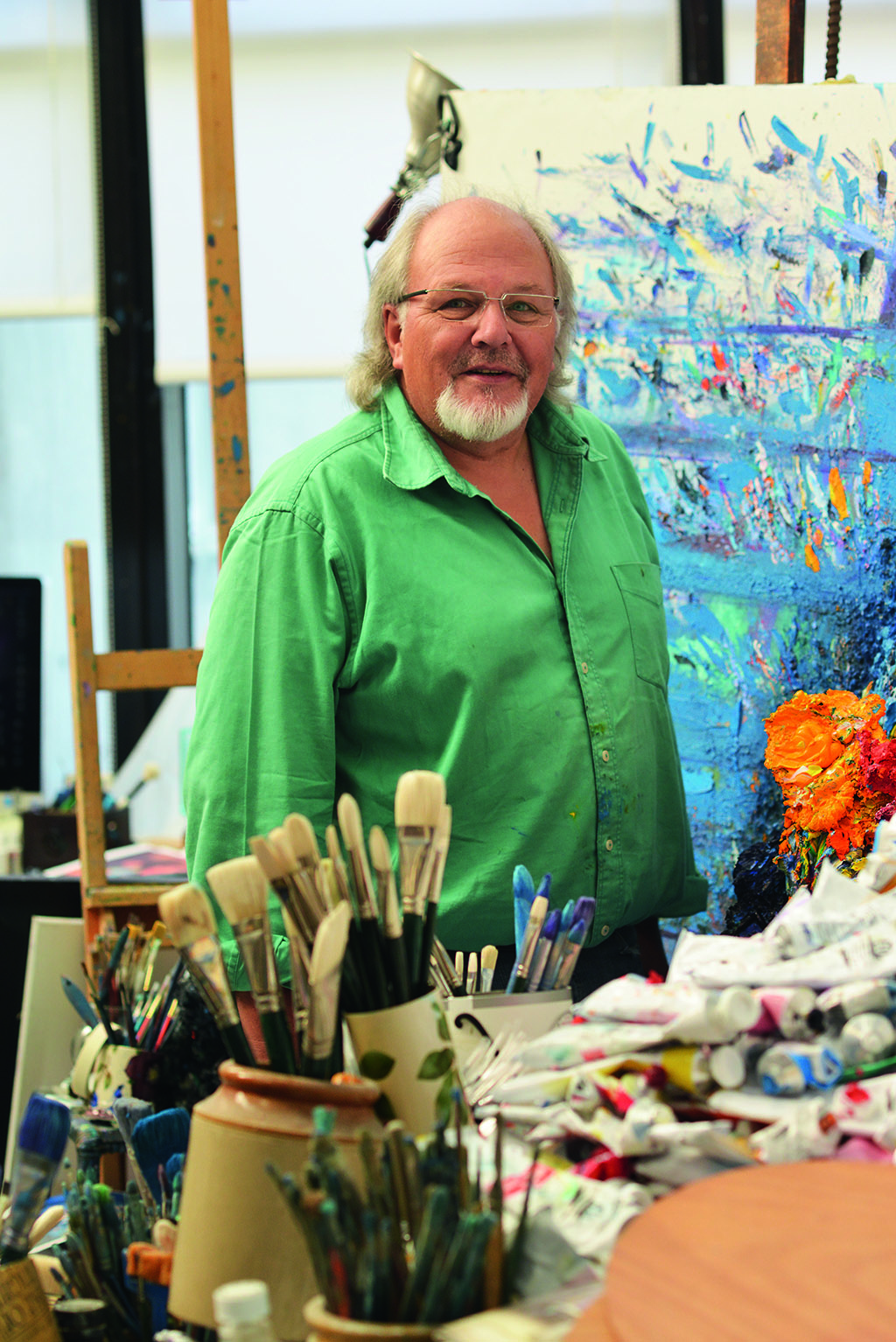
Celebrating the light fantastic with artist Jolomo
Painter John Lowrie Morrison – better known as Jolomo – fell in love with Argyll on family holidays and chose it as his home.
I always remember my dad saying he loved the light of Argyll and that’s always stuck with me as a painter. Although you’ll see a croft or a beach in my work, it’s not really the beach or the croft that I’m painting – it’s the light and how it affects everything it touches.
My dad wasn’t particularly artistic, so now I think that was quite a clever observation.
My parents were founder members of the Glasgow Nightingales cycling club. When they were out together they would be on a tandem and they would cycle up to Oban. That was the initial connection to the area, with my father and mother going there in the 1920s and 1930s and then taking me and my brother in the 1950s. Even though I was only a nipper, that was the start of my love affair with the area.
The first place I visited in Argyll was Oban. I camped in an old army tent at Ganavan Sands with my parents in about 1953 or 1954. My father is from Harris and we still have family there and a family croft. He loved going up to Harris but in those days it cost a huge amount of money. I think he longed for the islands but it was easier to go up into the countryside around Oban instead.

John takes in the view from the Crinan lighthouse (Photo: Angus Blackburn)
I’d always had a hankering to live in the country. My parents and five or six other members of my family – aunties and uncles and close cousins – had huts at Carbeth, an estate ten miles north of Glasgow. There was a great camaraderie with family and friends at weekends and in the holidays. It gave me a taste for living in the country, and the holidays in Argyll meant that was where I wanted to live.
After studying at Glasgow School of Art, I trained to become a teacher in the early 1970s.
My first job was at King’s Park Secondary in Glasgow. I was there a week, then a job came up as assistant teacher of art at Lochgilpead High School. It was a bolt out of the blue.
So I got the job in Lochgilpead and my wife, Maureen, who was training as a psychiatric nurse, she got a job around the same time in the Argyll & Bute Hospital at Lochgilpead. So it all fitted together.
Maureen and I had met at Templeton Carpets in Glasgow in 1969. She was working in the offi ces and I had been head-hunted by the head of the design department to work there over the summer as I was going into my third year at Glasgow School of Art. The fi rst time we went out together, I brought her up to Argyll. It was autumn and we came up to Tayvallich. So she was sold on the idea of moving to Argyll.
We used to come to Tayvallich for holidays. In fact, where we built our house and studio used to be a caravan site and we had our honeymoon there. It’s unbelievable that you’d spend your honeymoon in a place and then years later build your house there.
The view from the studio is of the hills of Jura and we just have to walk a few hundred yards and we’re on a sandy beach. We go over there a couple of times a day to walk the dog. We’re always by the sea and it’s wonderful.
We have a property on Mull too and a studio there that looks out o

The way in which light plays on objects like fishing boats is a source of inspiration (Photo: Angus Blackburn)
ver Iona and Staffa and Tiree. It has all developed over the years into this incredible connection with the West Coast sea and hills and beaches.
Argyll has a tremendous variation in its landscapes. It’s not like when you go up to Harris or Barra or South Uist where you have these huge skies or beaches going on for ever. Argyll’s not like that – it’s quite intimate. I love the forests and the hills. Then you have the sea.
I’ve always loved the sea – I think it must be in my blood. We’re an island family and I think it gets into your blood.
I’ve always drawn and painted the area, especially Knapdale. There have been a lot of old characters here – like ‘Archie the Jura’ and ‘Ronnie the Post’ – who I’ve painted a lot. When the Clydebank Museum did a big retrospective of my work in 2013, they included a lot of those paintings. I began painting them in the late 1960s and early 1970s before I moved here.
This was my muse. This was a place that drew me and still does. Although I paint all over the Outer Hebrides and Argyll, this is the place that still turns me on.
It’s so varied. Knapdale is amazing. It’s that intimacy again. You go up the hill and the next bit’s different and then you go round the corner and the next bit is different again. There’s a cottage on one corner and then a bit of field and then a beach round the next corner.
Then, not far away, down the other side of Loch Sween, you have beautiful beaches like Kilmory. And I still love Tighnabruaich and Kames, which we visited as children.
Barnluasgan is a lovely spot too – we walk the dog there all the time. I think that’s a good example of the intimacy of the ‘knaps’ of Knapdale. The knaps are the folds in the land. If you could view it from above in a satellite image, you’d see that it has these folds. It’s like corrugated iron, really, and it gives a great intimacy to the area that I love. It’s a kind of cosiness.

On board the Duchess on the Crinan Canal (Photo: Angus Blackburn)
One particular place that I keep getting drawn back to is Grogport, which I first painted while I was at art school in the 1960s. It’s down the east coast of Kintyre, not that far north from Carradale. It’s a wee hamlet with a bridge. Maybe half a dozen houses. And I love it.
There’s just something about it. Lovely white beach, the river coming out under the bridge, the way the cottages sit. I’ve just painted it and painted it and painted it and every time it’s dif ferent. I keep getting drawn back to Grogport and I know not why. It presses all the right buttons for me. In fact, that road along the eastern side of Kintyre is the ‘long and winding road’ that Paul McCartney sang about.
There’s such a contrast between the light on the East Coast and the light on the West Coast. Here on the West Coast, you can see the sun going down. From our house on Mull, we can watch the sun going down over the horizon of the sea, whereas you won’t see that in Elgin or Banff or anywhere in the North East. But there you get to see the sun coming up.
Iona is one of the places where painters have always gone, from the Colourists to the present day. It’s a special light. I gave a talk about it at the National Gallery of Scotland last year. The light when the sun’s setting is actually way over behind Iona looking back to the Gribun cliffs and that light is bouncing off the water and back up to whoever is painting it. The Ross of Mull is pink granite and reflects light, so people think of Iona as a very light place and many folk – not just Christians – find it very spiritual.
A lot of people say that my paintings are just landscapes, but I tell them that they’re actually quite religious to me because I’m painting God’s creation. They’re actually Christian paintings – they might not have the crucifixion in them or Noah’s ark or another biblical scene, but to me they’re Christian paintings because they reflect what I feel about the landscape and about God and my faith.

John Morrison in his studio at Tayvallich (Photo: Angus Blackburn)
I use chiaroscuro in my landscapes to express the contrast of light and dark in the human soul. Chiaroscuro is the use of strong dark contrasting with strong light – I use strong colour contrasting strong dark so it’s allegorical. I feel God more here in the landscape and I think a lot of people feel like that. When you’re in the city, it’s man’s creation, but when you’re in the country it’s definitely God’s creation. I couldn’t live in a city anymore, despite spending the first 25 years of my life in Glasgow.
I’m a lay preacher with the Church of Scotland and I travel all over the UK giving talks and sermons. Bellanoch Church, which is a wee Highland church on the Crinan Canal, is one that I really love. I also love preaching down at Tighnabruaich and Kames and at Kilfinan, parts of which date back to the 15th or 16th century. The wonderful thing at Kilfinan is that at least three folk bring their dogs in with them.
The first time I preached there I was worried they would have a fight, but they always just lie there and listen to the service. All this is why I love Argyll and why my love for Argyll grows each time I paint it.
Find out more about John Lowrie Morrison’s paintings at www.jolomo.com
This feature was originally published in 2014.
TAGS

